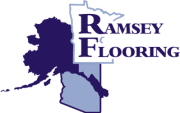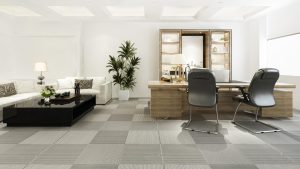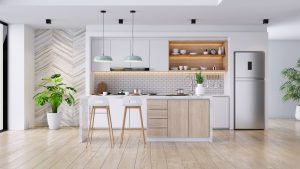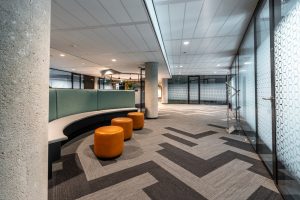Selecting flooring for the looming bathroom or kitchen design or refurbishment is perhaps the most crucial task of all. These spaces have to deal with water,heat or temperature fluctuations,so its imperative a flooring be suited to cope up with these conditions. In such scenarios, waterproof flooring is an optimal solution, one that meets style and functionality.
So let’s delve into the aspects of choosing the best waterproof flooring for bathrooms or kitchens and also highlight a few examples of their application.
Why Waterproof Flooring is Significant
Without a doubt the bathroom or kitchen is one of the areas where people go quite often in their homes. The bathroom is a common source of water and humidity in the homes. Water can easily enter into the subfloors which will lead to water damage, mold or mildew if the flooring is not built correctly. The existence of a waterproof floor takes away the risk of moisture by providing a barrier to it.
Some Key Advantages of Waterproof Flooring –
Waterproof flooring has many advantages such as:
- Durability: Can handle high volumes of foot traffic and spills, as well as general wear and tear.
- Low Maintanance: Simple to clean and easy to maintain making it perfect for families that are busy.
- Aesthetic Appeal: It comes in different designs and shapes like natural wooden more stone looking finishings easily.
- Environment: Curbing the growth of mold and mildew provides a more suitable indoor environment so occupants have better air quality.
- Different kinds of waterproof flooring
- Luxury Vinyl Plank (LVP) and Luxury Vinyl Tile (LVT)
Overview:
Natural wood and stone reproductions are common sights for both kitchen and bath floors but are most usually found in water-resistant luxury vinyl flooring. This vinyl kind is a relatively new player on the market.
Pros:
- 100% Waterproof.
- Gentle padding.
- Rich design options including patterns with different colors and textures.
- It is fairly easy to install using adhesive or click-and-lock options.
Cons:
They are prone to scratches if not maintained and cleaned properly.
Best for: Homeowners biting their four dollars for contemporary-looking, cost-effective, and waterproof floors.
- b) Porcelain and Ceramic Tile
Overview:
Porcelain and ceramic tiles possess classic features for the wet areas of a house, such as bathrooms and kitchens; their water resistant and seals their porous structures which confirms their resilience. Porcelain tiles however have a tighter and less porous construction than ceramic.
Pros:
- Extremely resistant to water, stains and scratches.
- Great durability and long life cycle, even in a high-use environment.
- Can literally be found in an endless amount of different sizes, shapes, and patterns.
- Perfect for radiant heating floors.
Cons:
- Very hard and cold unless heated.
- Difficult and time consuming when it comes to installation.
Best for: Areas, especially bathrooms and kitchens where both sambucas and designs are expected.
- c) Waterproof Laminate Flooring
Overview:
When laminate flooring was first created, it was not appropriate for moist areas. This is no longer a concern as there are now waterproof laminate that has a watertight core and protective outer layer.
Pros:
- Looks like wooden flooring but is cheaper.
- Has a good scratch resistance and is easy to maintain.
- Offers a more gentle feel than tiles.
Cons:
- It is not completely waterproof and dissipation of standing water can cause destruction.
- Areas where water ingress is a concern may need to be sealed.
Best for: Kitchens that will have minor spills, but flooding is not expected.
- d) Engineered Hardwood with Waterproof Core
Overview:
Engineered hardwood with waterproof core is a modification that enhances designed wooden products anda waterproof core simultaneously.
Pros:
- Wood veneer maintains natural or elegance.
- More resistant to water than the conventional hardwood.
- Puitable for kitchen and powder rooms.
Cons:
- Cost is higher than other waterproof products.
- It has less water resistance than vinyl or tiles.
Best for: Home owners who wish to have wooden products for places that are likely wet.
- e) Sheet Vinyl Flooring
Overview:
Sheet vinyl is a waterproof flooring in sheet form that is effective in bathrooms and kitchens due to its seamless style.
Pros:
- 100% waterproof with no seams in small spaces.
- Soft and comfortable underfoot.
- Cheap and readily in the market; easy installation.
Design options are less than LVP or tile planks since they come with a limited variety.
It is somewhat easy to tear or dent them.
Very suitable: For those homeowners who are on a tight budget and needs an easy to use waterproof solution.
- Factors to Consider When Picking Waterproof Flooring
While picking out a waterproof flooring for the bathroom or the kitchen, the following points should be kept in mind:
- a) The Essential Qualities of the Materials: Durability & Wear Resistance
In order to choose a floor material, which can be subjected to regular usage including footfalls, wear and tear when choosing for bathrooms and kitchens.
- b) Room & Style of the Flooring
Search for a flooring solution that suits your taste and design, while making your room’s appearance stand out.
- c) The Feeling of Comfort and Warmth
Tiles and other such materials provide a cold surface. You have the option of installing heating or going for flooring materials such as vinyl and laminate that are less rigid.
- d) The Ease of Installing
In case the plan is to install the flooring by self, one can go for a product which has a click and lock system or an adhesive back one.
- e) Amount Spent/Cost
Various waterproof flooring products can be found at different costs so one can find a product that fits within their budget without lowering quality.
4.Prevention Care and Maintenance Procedures
These waterproof flooring units are aided with a number of procedures as a preventive measure in order to ensure a longer life:
- Immediate Response to Spills: In order to avoid stains and other damages, any moist spots should be mopped off.
- Avoid Scratch Cleaners: Do not use abrasive cleaner that will certainly scratch the surface of the floorboard.
- Use Rugs: Use rugs as a mat in areas that are heavily used or close to a sink to prevent moisture and usage to damage the floors.
- Check the Seams: This helps ensure that water will not go through and that there are no leaks.
Conclusion
The use of waterproof flooring in bathrooms and kitchens not only helps in preventing moisture but also increases the elegance of the room. These days, it is difficult to imagine a place without floor coverings, and it is just as hard to imagine that some people might not have any preference. For tile enthusiasts who prefer the modern touch, vinyl lovers who wish to add warmth and classic wooden flooring fans, there exists an option. The hardest aspect of home improvement is selecting the perfect floor that complements your design while also being strong enough to withstand the rigors of time.






